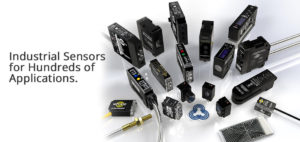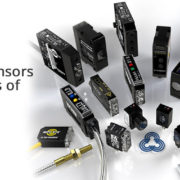Forget the IoT: It’s all about the Industrial IoT
 Smart televisions, talking home assistants, consumer wearables – that’s not the real story of the Internet of Things. While those are fun and get great stories on blogs and morning news reports, the real IoT is the Industrial IoT. That’s where businesses will truly be transformed, with intelligent, connected devices working together to improve services, reduce friction, and disrupt everything. Everything.
Smart televisions, talking home assistants, consumer wearables – that’s not the real story of the Internet of Things. While those are fun and get great stories on blogs and morning news reports, the real IoT is the Industrial IoT. That’s where businesses will truly be transformed, with intelligent, connected devices working together to improve services, reduce friction, and disrupt everything. Everything.
According to Grand View Research, the Industrial IoT (IIoT) market will be $933.62 billion by 2025. “The ability of IoT to reduce costs has been the prime factor for its adoption in the industrial sector. However, several significant investment incentives, such as increased productivity, process automation, and time-to-market, have also been boosting this adoption. The falling prices of sensors have reduced the overall cost associated with data collection and analytics,” says the report.
The report continues,
An emerging trend among enterprises worldwide is the transformation of technical focus to improving connectivity in order to undertake data collection with the right security measures in place and with improved connections to the cloud. The emergence of low-power hardware devices, cloud integration, big data analytics, robotics & automation, and smart sensors are also driving IIoT market growth.
Markets and Markets
Markets & Markets predicts that IIoT will be worth $195.47 billion by 2022. The company says,
A key influencing factor for the growth of the IIoT market is the need to implement predictive maintenance techniques in industrial equipment to monitor their health and avoid unscheduled downtimes in the production cycle. Factors which driving the IIoT market include technological advancements in semiconductor and electronics industry and evolution of cloud computing technologies.
The manufacturing vertical is witnessing a transformation through the implementation of the smart factory concept and factory automation technologies. Government initiatives such as Industrie 4.0 in Germany and Plan Industriel in France are expected to promote the implementation of the IIoT solutions in Europe. Moreover, leading countries in the manufacturing vertical such as U.S., China, and India are expected to further expand their manufacturing industries and deploy smart manufacturing technologies to increase this the contribution of this vertical to their national GDPs.
The IIoT market for camera systems is expected to grow at the highest rate between 2016 and 2022. Camera systems are mainly used in the retail and transportation verticals. The need of security and surveillance in these sectors is the key reason for the high growth rate of the market for camera systems. In the retail sector, the camera systems are used for capturing customer behavior, moment tracking, people counting, and heat mapping. The benefits of installation of surveillance systems include the safety at the workplace, and the prevention of theft and other losses, sweet hearting, and other retail crimes. Video analytics plays a vital role for security purpose in various areas in transportation sector including airports, railway stations, and large public places. Also, intelligent camera systems are used for traffic monitoring, and incident detection and reporting.
Accenture
The huge research firm Accenture says that the IIoT will add $14.2 trillion to the global economy by 2030. That’s not talking about the size of the market, but the overall lift that IIoT will have. By any measure, that’s staggering. Accenture reports,
Today, the IIoT is helping to improve productivity, reduce operating costs and enhance worker safety. For example, in the petroleum industry, wearable devices sense dangerous chemicals and unmanned aerial vehicles can inspect remote pipelines.
However, the longer-term economic and employment potential will require companies to establish entirely new product and service hybrids that disrupt their own markets and generate fresh revenue streams. Many of these will underpin the emergence of the “outcome economy,” where organizations shift from selling products to delivering measurable outcomes. These may range from guaranteed energy savings in commercial buildings to guaranteed crop yields in a specific parcel of farmland.
IIoT Is a Work in Progress
The IIoT is going to have huge impact. But it hasn’t yet, not on any large scale. As Accenture says,
When Accenture surveyed more than 1,400 C-suite decision makers—including 736 CEOs—from some of the world’s largest companies, the vast majority (84 percent) believe their organizations have the capability to create new, service-based income streams from the IIoT.
But scratch beneath the surface and the gloss comes off. Seventy-three percent confess that their companies have yet to make any concrete progress. Just 7 percent have developed a comprehensive strategy with investments to match.
Challenge and opportunity: That’s the Industrial Internet of Things. Watch this space.



